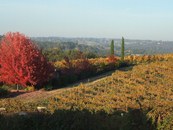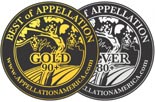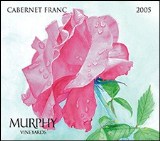
 The winemaking history of the Sierra Foothills is long but sporadic. It began in 1849 with some particularly resourceful gold miners who remembered to pack in some grapevines. After the gold ran out and Prohibition hit, the wine industry became all but obsolete. That changed in the 1970s when the area was rediscovered by winemakers from Napa and Sonoma counties, who saw a new motherlode in the inexpensive quality land in the Sierra Foothills. These foothills of the Sierra Nevada Mountains form a belt 170 miles long, ranging from 1,000-3,000 feet high. It encompasses 2.6 million acres covering parts of eight of central California’s 12 counties. Well over 100 wineries are at home in the foothills now, where they grow everything from hardy and bold Zinfandels to elegant and graceful Sauvignon Blancs. Generally, this section of the mountain range has warm days and cool nights. It is much cooler here than on the Central Valley floor and the Foothills receive less rain than the more mountainous neighboring appellations. The soils are decomposed granite, formed by mountain erosion over centuries, forcing the vines to probe deeply for nutrients and water. The result is wine that is dense with ripe fruit and plentiful structure.
The winemaking history of the Sierra Foothills is long but sporadic. It began in 1849 with some particularly resourceful gold miners who remembered to pack in some grapevines. After the gold ran out and Prohibition hit, the wine industry became all but obsolete. That changed in the 1970s when the area was rediscovered by winemakers from Napa and Sonoma counties, who saw a new motherlode in the inexpensive quality land in the Sierra Foothills. These foothills of the Sierra Nevada Mountains form a belt 170 miles long, ranging from 1,000-3,000 feet high. It encompasses 2.6 million acres covering parts of eight of central California’s 12 counties. Well over 100 wineries are at home in the foothills now, where they grow everything from hardy and bold Zinfandels to elegant and graceful Sauvignon Blancs. Generally, this section of the mountain range has warm days and cool nights. It is much cooler here than on the Central Valley floor and the Foothills receive less rain than the more mountainous neighboring appellations. The soils are decomposed granite, formed by mountain erosion over centuries, forcing the vines to probe deeply for nutrients and water. The result is wine that is dense with ripe fruit and plentiful structure.
|
|
Current Feature
In the southern Blue Ridge Mountains of North Carolina and Georgia vineyards are small and few, yet the establishment of the Upper Hiwassee Highlands could bring much more.
[>] continue
Appellation Features
[>] see all Sierra Foothills features (2)
Related Features
Best of Appellation
See the best wines of
Sierra Foothills
BLUE BOOK PROFILES
Blue Book Taste Profiles for the Sierra Foothills AVA
Alive & Well here

Syrah | Shiraz:
During the Roman occupation of Gaul you rose to fame as a captive vine turned gladiator. Your legend
[>] continue



 Bi-State Upper Hiwassee Highlands an AVA
Bi-State Upper Hiwassee Highlands an AVA  Truly Unique Clos du Lac Community Vineyards
Truly Unique Clos du Lac Community Vineyards  Sierra Foothills Zin In One Word: Diversity
Sierra Foothills Zin In One Word: Diversity  Remote Manton Valley New California AVA
Remote Manton Valley New California AVA WAWGG Banquet Explores Washington State Terrior
WAWGG Banquet Explores Washington State Terrior Taking Focus on Appellation
Taking Focus on Appellation A Day in the (Rutherford) Dust
A Day in the (Rutherford) Dust Whitehall Lane Winery, A 20 Year Story of Vineyards
Whitehall Lane Winery, A 20 Year Story of Vineyards Embracing Virginia’s Terroir
Embracing Virginia’s Terroir 





